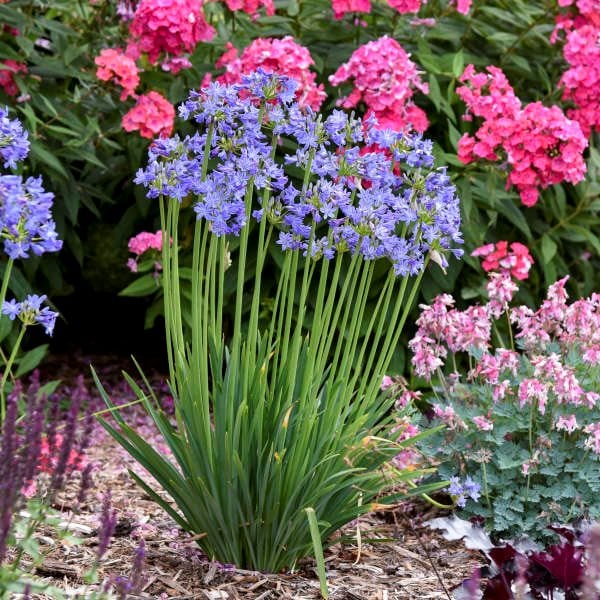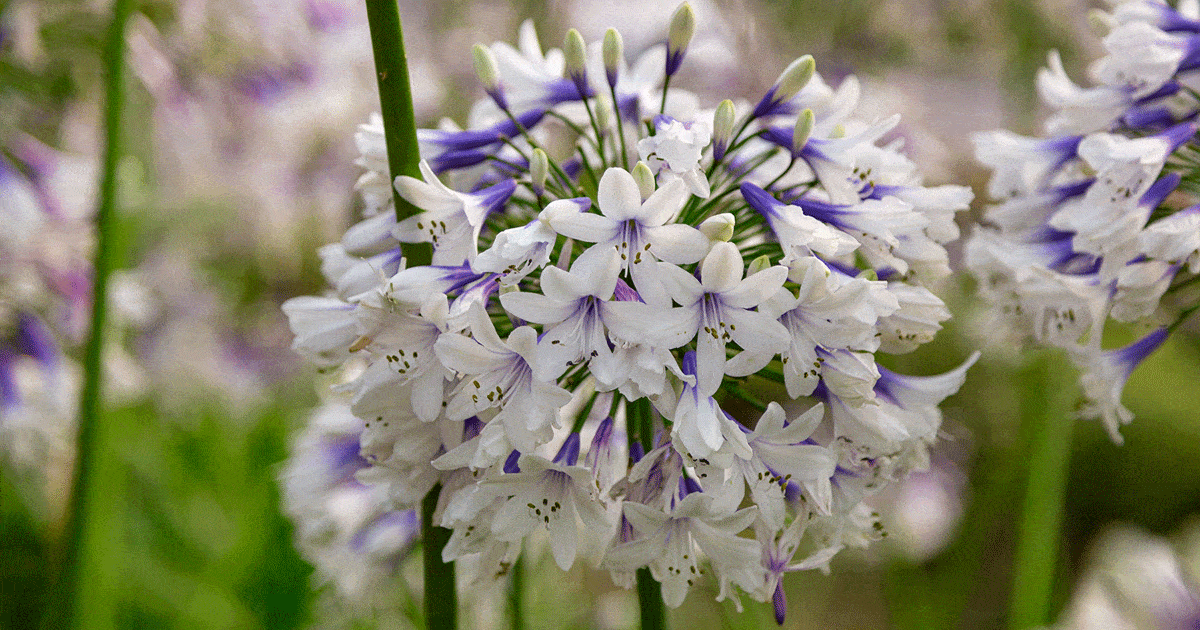Agapanthus Varieties: Picking the Best for Your Landscape
Agapanthus Varieties: Picking the Best for Your Landscape
Blog Article
Unleashing the Secret to Effective Agapanthus Cultivation: Idea for a Flourishing Yard
In the realm of gardening, cultivating agapanthus effectively calls for a tactical technique that incorporates different facets of plant treatment. With cautious attention to information, one can open the keys to supporting these stunning blooms, leading to a yard that prospers with appeal and vibrancy. By recognizing the nuances of agapanthus cultivation, one can produce an atmosphere where these plants prosper and grow abundantly. In the adhering to discussion, we will certainly explore vital tips and tricks that will lead you in the direction of a prospering agapanthus yard, offering insights into finest practices, dirt conditions, watering techniques, and more.
Planting Agapanthus: Ideal Practices
When growing Agapanthus, proper dirt prep work is vital for guaranteeing successful growth and advancement of these lovely flowers. Agapanthus, generally referred to as Lily of the Nile or African lily, thrives in well-draining soil with a somewhat acidic to neutral pH degree - Agapanthus. Before planting, it is critical to amend hefty clay soils with raw material such as compost or peat moss to enhance water drainage and provide essential nutrients for the plants
To plant Agapanthus, pick an area that gets full sunshine to partial shade, as this will certainly promote healthy growth and plentiful blooming. Dig an opening twice the diameter of the plant's root sphere and put the Agapanthus at the same depth it was formerly expanding. Delicately backfill the hole with dirt, pushing down firmly to get rid of any kind of air pockets around the roots.
Water the freshly planted Agapanthus thoroughly and continue to keep the soil uniformly wet, especially throughout the plant's active growing period. Agapanthus. Using a well balanced plant food once a month can better sustain the plant's growth and blooming. By adhering to these finest practices for growing Agapanthus, you can produce a spectacular display screen of these captivating flowers in your yard
Suitable Dirt Conditions for Agapanthus
For ideal development and flowering success of Agapanthus plants, making sure the soil conditions are suitable is critical. Agapanthus prospers in well-draining dirt with a somewhat acidic to neutral pH degree ranging from 6.0 to 7.0. This kind of dirt permits sufficient water drainage, preventing waterlogging which can bring about root rot. To boost dirt water drainage, take into consideration adding raw material such as compost or peat moss when preparing the planting site. In addition, Agapanthus chooses soil that is rich in nutrients, so integrating a well balanced plant food during the expanding season can advertise healthy and balanced development and lively blooms.

Watering and Fertilizing Tips
To guarantee healthy and balanced development and vibrant blossoms, correct watering and fertilizing techniques are necessary for successful Agapanthus growing. Agapanthus plants benefit from regular watering, particularly throughout the expanding season. It is advised to water deeply when a week, making certain the soil is wet yet not saturated. Throughout heat or in pots, more constant watering might be required to stop the dirt from drying completely.
When it pertains to feeding Agapanthus, a well balanced fertilizer with equivalent components nitrogen, phosphorus, and potassium can be used in the spring to advertise healthy development and flowering. Slow-release plant foods are suitable for supplying nutrients progressively over a prolonged duration. Avoid over-fertilizing, as this can bring about excessive vegetation development at the cost of flowers.
In addition, incorporating raw material like compost into the dirt can improve nutrient degrees and boost dirt framework, assisting in the general health and wellness of the Agapanthus plants. By following these watering and fertilizing tips, garden enthusiasts can ensure their Agapanthus plants prosper and create sensational display screens of flowers.
Trimming and Deadheading Strategies
Appropriate trimming and deadheading methods play a critical duty in preserving the health and wellness this post and aesthetic appeals of Agapanthus plants, enhancing the important practices of watering and fertilizing for successful cultivation. Pruning Agapanthus entails removing invested flower heads, yellowing or dead fallen leaves, and total shaping of the plant to advertise far better growth. Deadheading, the procedure of removing discolored flowers, not just enhances the plant's look yet likewise urges further flowering.
When deadheading Agapanthus, it is suggested to snip off the blossom stem at the base making use of sharp, tidy shears. This process reroutes the plant's power from seed production back right into root and foliage development, advertising a healthier and more robust plant. Routine deadheading can extend the flowering duration of Agapanthus and avoid self-seeding, which can cause overcrowding.
In terms of trimming, Agapanthus typically gain from a light trim after blossoming to clean up the plant and encourage fresh growth. Cutting down the invested flower stems and removing any type of broken or dead foliage assists keep the plant's vigor and general look. Nonetheless, it is important to stay clear of reducing right into the crown of the plant, as this can damage its health and wellness.

Protecting Agapanthus From Pests and Diseases
Executing efficient parasite and condition monitoring methods is vital to guarding the wellness and vitality of Agapanthus plants in farming. Agapanthus are normally sturdy plants, yet they can still this page come down click this site with numerous parasites and conditions otherwise appropriately looked after. One usual pest that influences Agapanthus is the Agapanthus borer, a caterpillar that passages right into the plant, creating damages to the leaves and flowers. To prevent invasions, routine assessment of the plants is crucial. If borers are identified, they can be by hand removed, or insecticidal soap can be made use of as a control action.
In addition to bugs, Agapanthus are susceptible to illness such as origin rot and fungal leaf places. By staying alert and attending to parasite and disease problems without delay, garden enthusiasts can aid their Agapanthus thrive and flourish.

Final Thought
To conclude, effective farming of agapanthus calls for proper planting strategies, perfect soil conditions, sufficient watering and fertilizing, routine pruning and deadheading, and protection from conditions and pests. By following these techniques and suggestions, gardeners can ensure a growing garden loaded with lovely agapanthus flowers. Agapanthus. Bear in mind to preserve regular care and focus to detail to promote the wellness and longevity of these spectacular plants
When growing Agapanthus, proper dirt preparation is crucial for ensuring effective development and advancement of these attractive blossoms.Water the newly grown Agapanthus completely and proceed to maintain the dirt equally damp, specifically throughout the plant's energetic expanding season.For optimal development and flowering success of Agapanthus plants, making certain the soil conditions are excellent is important. When hair transplanting or growing Agapanthus, make sure the dirt is well-prepared to provide the required structure for the plants to establish themselves successfully. One typical bug that impacts Agapanthus is the Agapanthus borer, a caterpillar that passages into the plant, creating damages to the leaves and flowers.
Report this page